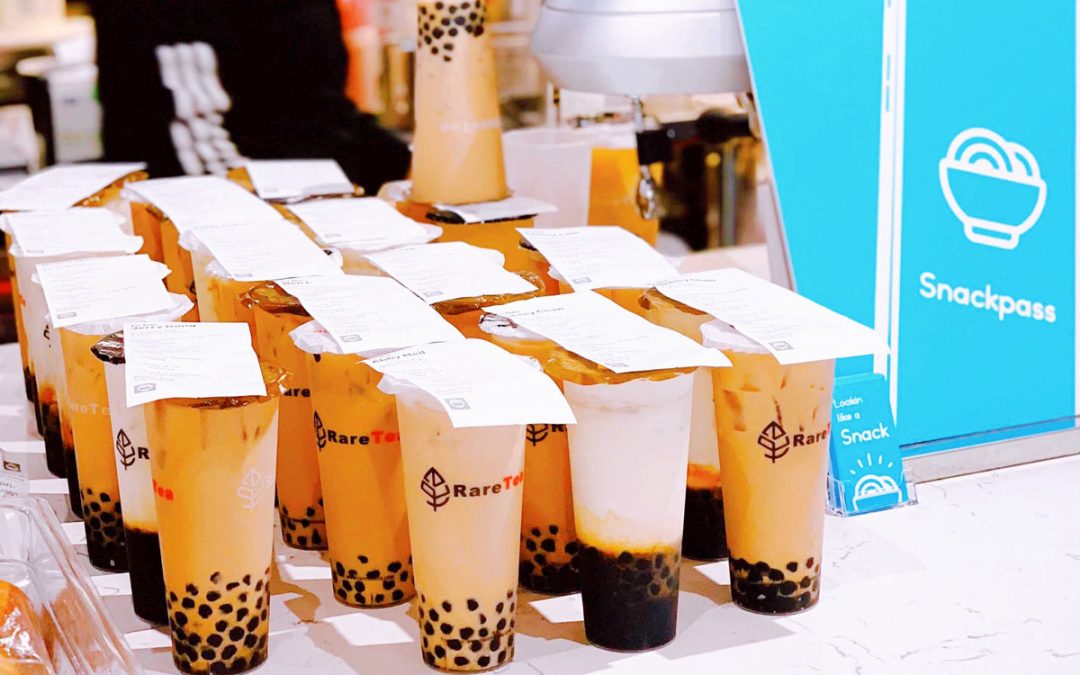Curious what your friend ate for lunch? Want to break the ice with an iced coffee? That’s the social focus that helped Snackpass secure a $70 million Series B round to transform digital ordering.
The company was started in 2017, when founder Kevin Tan was a senior at Yale studying physics. At first it was just a digital ordering tool, one with no funding or marketing budget.
“Snackpass didn’t have much funding, [and] we couldn’t pay for referrals like the other platforms. We couldn’t compete with that,” said Tan. “Facebook and Tinder exploded on campuses. With that virality, we wondered if there was a way to bake that into the product. It would be a win-win-win for us, the customer and the partner. It clicked for us.”
At the heart, it’s still a digital-ordering app. Customers pull up the restaurant’s menu, make an order and get a time to pick it up. The restaurant gets a ping on their Snackpass tablet, alerting them that a customer is coming. On top of the basics, customers can earn points in the system, creating an interesting loyalty layer for restaurant operators who don’t already have one. Dovetailed with the loyalty effect, there is also the social overlay that allows customers to gift points, deals or entire menu items to their friends.
Peer-to-peer payment platform Venmo is maybe the closest app out there when it comes to the social feed. When a customer makes a purchase, it shows up in the feed. When another customer sends a gift, it does, too. But unlike Venmo, which tends to get a few likes here and there, Snackpass’ social feed is wildly popular among current app users. The app has an 80 percent adoption rate and the social usage is even more incredible—86 percent of transactions have some sort of social interaction.
“We see it manifest in so many funny ways we didn’t predict. It’s very unexpended, some users will send it to a roommate to bond, or slide into a DM with someone new, or just send points to your coach or coworker,” said Tan. “I’ve even seen people strategize that I’ll send points to this friend for this place and I’ll get some back from that restaurant. When you combine the social and commerce graph, we’re just scratching the surface.”
At about $60 million in food and beverage transactions annually, he said it’s one of the largest experiments of social commerce to reach this scale.
There are other neat perks in the system, too. There are kiosks that allow for digital ordering in the restaurant. Snackpass makes a lot of data available to restaurant operators and helps them market with deals and general customer engagement. That, too, aligns with the social aspect within the app. Tan said app users come a lot more, and tend to bring their friends.
“We found that app customers order twice as frequently compared to credit card consumers. You can promote with loyalty and the social features like gifting and group buying, that encourages customers to recruit their friends, so you’re recruiting your customers to find more fans,” said Tan.
The social nature of the app was the core thesis for investors, as well. There were some big names like the Jonas Brothers and Steve Aoki, who wants to put it in his pizza restaurants, and owners of the Celtics who are thinking about Snackpass in their stadium. Postmates founder Bastian Lehmann is in the mix investing and sharing insights, too. Leading the round was Craft Ventures, a venture capital firm with more than 145 investments, mostly in software companies.
Bryan Rosenblatt, a partner at the firm, said the social component made the early-stage app stand out because the social layer turns something mundane into something gripping.
“I think what got us really excited is that Snackpass has basically taken something that is transactional and has made it social, fun and viral,” said Rosenblatt. “On the restaurant side, the feedback we got from restaurants about how they saw the team and the tools was really, really unique. The combination of both sides of that marketplace got us excited.”
The idea of a two-sided marketplace is exceptionally attractive for investors. Think Amazon, PayPal or Facebook, as they’ve all done pretty well for investors. The engagement takes it to the next level. Instead of other apps where you just open it up to buy something or check some data, Snackpass users pick it up when they’re bored, but not hungry.
“Users are coming back every day, every week to order, and I think that’s driven by the social part. You’re seeing what your friends are up to and you’re gifting or getting a deal or reward points. People are keeping up to speed on this versus just the transactional ordering,” said Rosenblatt.
Tan said the funding will go toward expanding the company’s engineering team. He said he’s looking to grow beyond the current 500,000 users in key hot spots in New York, L.A. and Washington, D.C.


